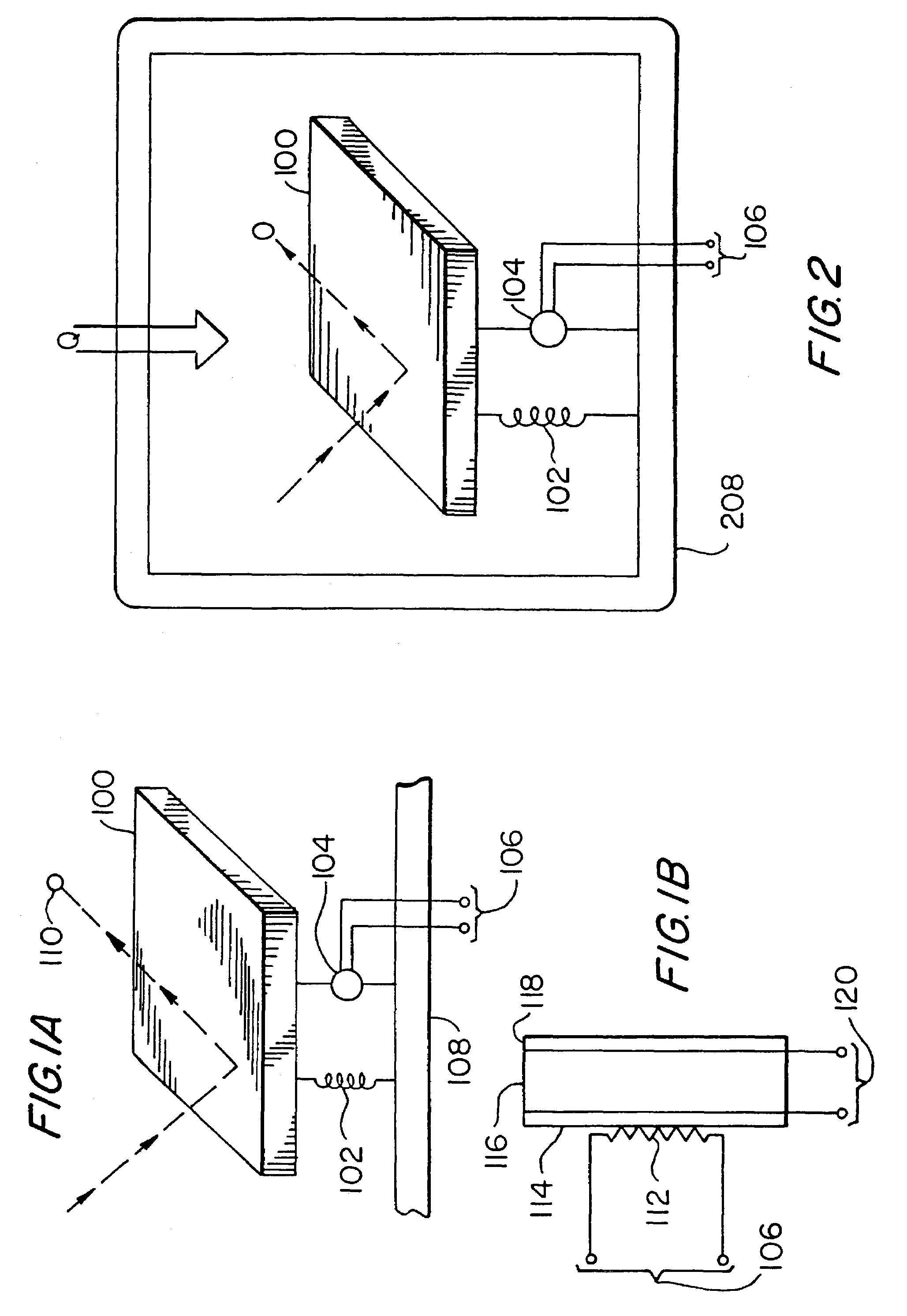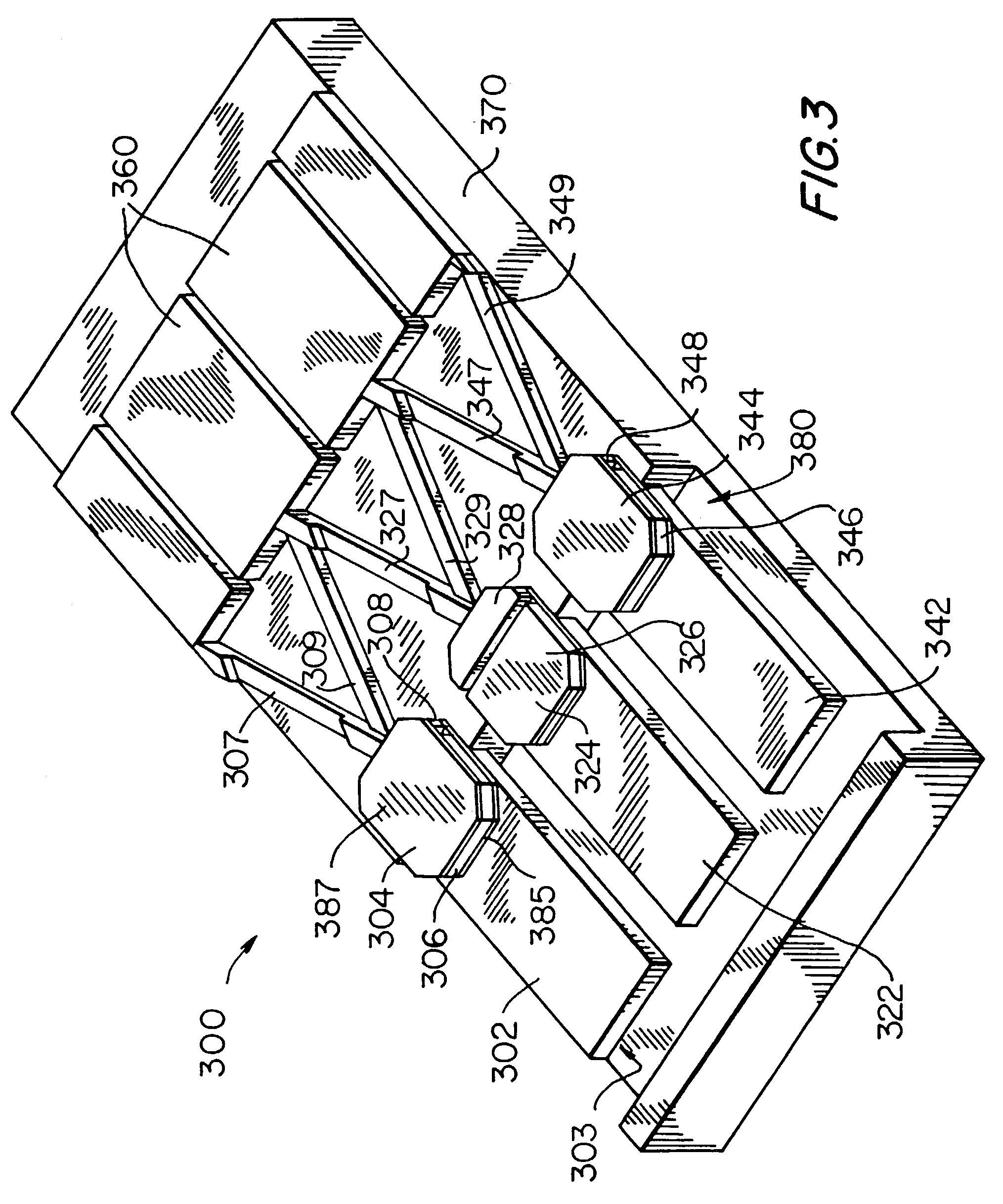Energy conversion systems using nanometer scale assemblies and methods for using same
a technology of energy conversion and nanometer scale, applied in the direction of electric generator control, instruments, heat measurement, etc., can solve the problem of paddles oscillation, and achieve the effect of reducing the velocity of molecules within the working substance and efficiently converting molecular-level energy
- Summary
- Abstract
- Description
- Claims
- Application Information
AI Technical Summary
Benefits of technology
Problems solved by technology
Method used
Image
Examples
Embodiment Construction
[0037]FIG. 1A shows an illustrative example of a portion of a nanometer scale electromechanical system constructed in accordance with the present invention. The portion shown includes an impact mass in the form of paddle 100, a restraining member 102, an generator device 104 (which provides an electrical output at leads 106), and a base 108 (which is typically thousands or millions times larger than paddle 100). Paddle 100 is attached to base 108, which may be thermally conductive, but need not be, so that paddle 100 may be moved within a predetermined range of distance in one or more directions (such as laterally, or up and down). A complete energy conversion system using nanometer scale assemblies would typically include a million or more of the devices shown in FIG. 1A, as will become more apparent below (see, for example, FIGS. 5 and 6).
[0038]Paddle 100 may be constructed, for example, from a substance such as carbon or silicon, although persons skilled in the art will appreciat...
PUM
| Property | Measurement | Unit |
|---|---|---|
| height | aaaaa | aaaaa |
| height | aaaaa | aaaaa |
| stiffness | aaaaa | aaaaa |
Abstract
Description
Claims
Application Information
 Login to View More
Login to View More - R&D
- Intellectual Property
- Life Sciences
- Materials
- Tech Scout
- Unparalleled Data Quality
- Higher Quality Content
- 60% Fewer Hallucinations
Browse by: Latest US Patents, China's latest patents, Technical Efficacy Thesaurus, Application Domain, Technology Topic, Popular Technical Reports.
© 2025 PatSnap. All rights reserved.Legal|Privacy policy|Modern Slavery Act Transparency Statement|Sitemap|About US| Contact US: help@patsnap.com



